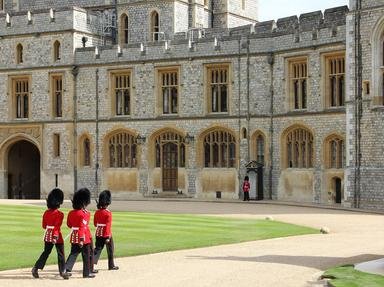Quiz Answer Key and Fun Facts
1. At the Battle of Edgehill in 1642, twelve-year old Prince Charles was observing the action when his party when a Parliamentarian cavalry soldier broke rank and headed straight towards them. Who fired at the charging soldier to defend the young prince?
2. When Prince Charles was Captain-General of the Western Association, to whom did he issue a "pitiless rebuke" to in public for leaving his post without permission?
3. Where did Prince Charles hold a "Grand Militia Field Day" on 29 April 1646?
4. At the age of 17, during his first period of exile from England, Charles sought to alleviate his increasing boredom by trying to join the army of which state?
5. In 1648, following a mutiny on ships of the English Navy, several made their way to Holland and declared for the King. Charles sailed with this fleet to the English coast, where he almost fought a naval battle against a Parliamentarian fleet led by whom?
6. In 1650, Charles allied with the Scottish Presbyterian Covenanters to gain support for his retaking of the throne. This agreement saw Charles throw over the leader of the Scottish royalists, whose execution swiftly followed. Who was the leader that ended up hanged and quartered?
7. Charles made a number of mistakes in relation to his prosecution of the Battle of Worcester, one of which involved his commanders. Who suggested himself as a replacement for David Leslie, who led Charles's Covenanter army?
8. In 1652, Charles was involved in negotiations to try and end which conflict?
9. Following the start of the First Anglo-Dutch War in 1652, Charles attempted to secure Dutch assistance for his cause. One of his proposals was that, in return for the Dutch securing the Isles of Scilly and the Channel Islands, he would allow them access to the Orkney Islands for what purpose?
10. During his exile, Charles developed a strong desire to engage in combat, which he did in the service of the King of Spain, Felipe IV. His only major episode of war service for Felipe IV was in 1657 during the siege of which town in the Spanish Netherlands?
Source: Author
Red_John
This quiz was reviewed by FunTrivia editor
gtho4 before going online.
Any errors found in FunTrivia content are routinely corrected through our feedback system.
